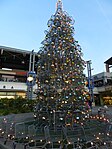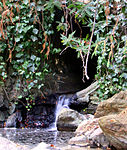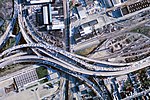Shell Development Emeryville
1928 establishments in California1972 disestablishments in CaliforniaBuildings and structures in Emeryville, CaliforniaDefunct oil companies of the United StatesEnergy companies established in 1928 ... and 6 more
Non-renewable resource companies disestablished in 1972Non-renewable resource companies established in 1928Petroleum in CaliforniaResearch institutes in CaliforniaResearch institutes in the San Francisco Bay AreaShell plc buildings and structures
The Emeryville Research Center of Shell Development Company in Emeryville, California was a major research facility of Shell Oil Company in the United States from 1928 until 1972, when Shell Development relocated to Houston, Texas. Shell Development's Emeryville facilities were located on about 27 acres (110,000 m2), included nearly 90 buildings at its peak, and when decommissioned in 1972, employed a staff of about 1500.
Excerpt from the Wikipedia article Shell Development Emeryville (License: CC BY-SA 3.0, Authors).Shell Development Emeryville
46th Street,
Geographical coordinates (GPS) Address Nearby Places Show on map
Geographical coordinates (GPS)
| Latitude | Longitude |
|---|---|
| N 37.8341 ° | E -122.2886 ° |
Address
46th Street
94608
California, United States
Open on Google Maps








